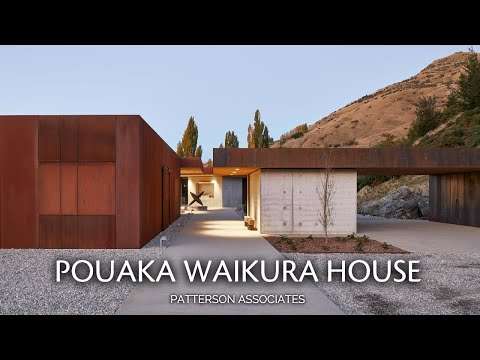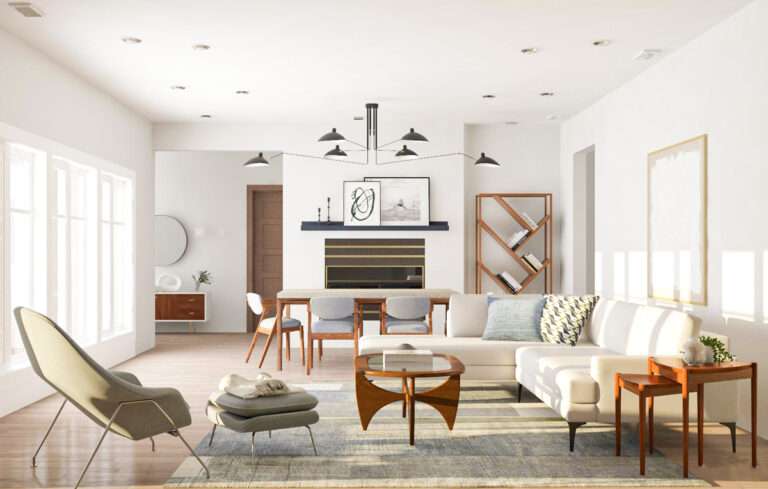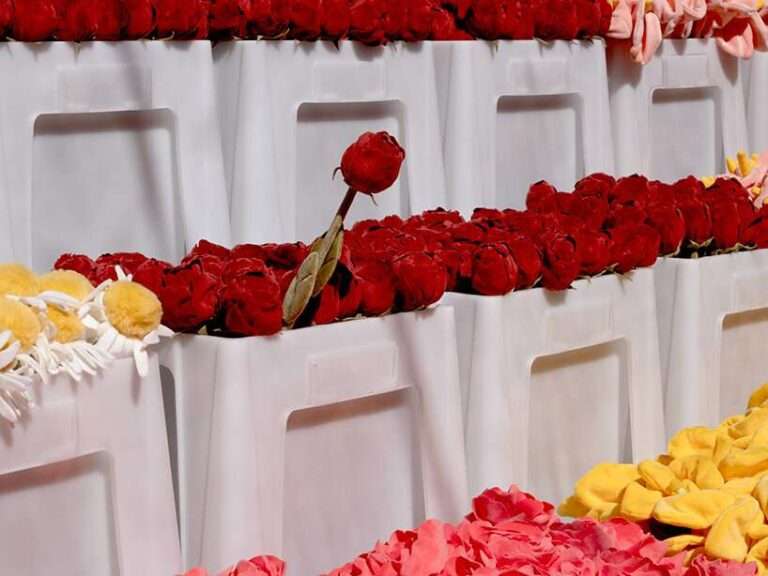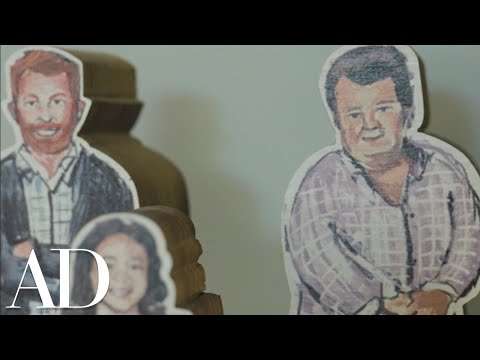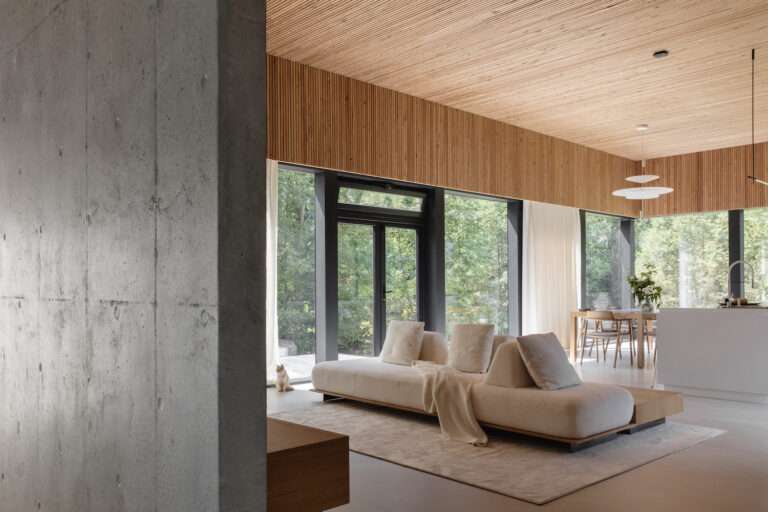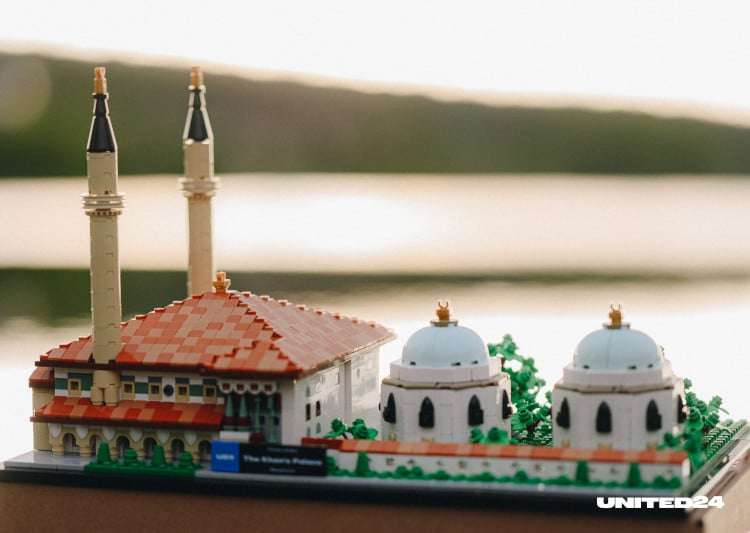Letting their imagination run wild, the team at Nina Maya Interiors has created celebrity holiday home Residence F from the ground up. Located upon a hill, Residence F is afforded breathtaking views of the immaculate Sydney harbour bridge and city as well as sightlines across to Manly. Leading to the celebrity holiday home is a long driveway that offers seclusion and privacy to the inhabitants. Positioned at the end the drive is the residence, which slowly reveals itself before a landscaped walkway leads to a pivot door. Through the front door, the house tour slowly reveals the unique character, decor and interior design of the celebrity holiday home. In the centre of the room is the custom-built staircase – its meticulously carved curve design, LED steps and skylight above frame the staircase as an art piece.
Involved in the architecture, planning, development, project management and interior design, Nina Maya was able to remain hands-on over the five years it took to create the coastal home. Though Maya Sternberg and Nina Maya Interiors followed the clients’ original brief, which was to create a world class space that was fitting of the location, the team took risks with the overall design. This was also backed by a close relationship with the clients as Residence F is the third property they have worked on together. This project was to be the clients’ showcase house, where they could entertain guests, spend time with family and friends and admire the city. As the celebrity holiday home is surrounded by heritage trees, the house has a monolithic feeling and is able to hold its own amid the landscape. To achieve this, the architect covered the entire building in Italian travertine, which gives the exterior decor a sense of gravitas, purpose and history while also allowing the breathtaking home to feel as if it’s always been there.
Shown in the house tour are several spaces where the owners can connect with the landscape. One such place is the unique glass conservatory on the ground level. Additionally, several organic-shaped skylights are designed to offer views to the treetops, while sliding glass doors emphasise seamless indoor-outdoor living. Part of the home’s iconic interior design is the kitchen, which has become the heart of the home. The kitchen also creates the design language for the home as the architect has selected an Italian stone with colour variations and a sinuous curve to fill the space.
Continuing to push the boundaries with each project – and Residence F is no exception – the team created a custom glass brick for the home’s exterior, which invites a unique quality of light into the interior. From the dappled morning light in the conservatory to the terrace where the sunset soaks the pool and courtyard with a warm glow, the celebrity holiday home grasps natural light at every opportunity. Through class and considered detailing, Residence F makes the most of its surrounds and provides an elegant base to vacation and entertain.
00:00 – Introduction to the Celebrity Holiday Home
01:14 – The World Class Brief
02:08 – Creating an Indoor-Outdoor Flow
03:26 – An Iconic Material Palette
04:49 – Enhancing the Natural Light
05:41 – Pushing the Boundaries of Design
06:38 – Proud Moments
For more from The Local Project:
Instagram – https://www.instagram.com/thelocalproject/
Website – https://thelocalproject.com.au/
LinkedIn – https://www.linkedin.com/company/the-local-project-publication/
Print Publication – https://thelocalproject.com.au/publication/
Hardcover Book – https://thelocalproject.com.au/book/
The Local Project Marketplace – https://thelocalproject.com.au/marketplace/
For more from The Local Production:
Instagram – https://www.instagram.com/thelocalproduction_/
Website – https://thelocalproduction.com.au/
LinkedIn – https://www.linkedin.com/company/thelocalproduction/
To subscribe to The Local Project’s tri-annual print publication see here – https://thelocalproject.com.au/subscribe/
Photography by Felix Forest.
Architecture by Maya Sternberg.
Interior design by Nina Maya Interiors.
Build by Jcorp.
Styling by Joseph Gardner.
Landscape design by Myles Baldwin Design.
Filmed by The Local Production.
Edited by Andre Hoo.
Production by The Local Production.
Location: Sydney, New South Wales, Australia
The Local Project acknowledges the Aboriginal and Torres Strait Islander peoples as the Traditional Custodians of the land in Australia. We recognise the importance of Indigenous peoples in the identity of our country and continuing connections to Country and community. We pay our respect to Elders, past and present, and extend that respect to all Indigenous people of these lands.
#Celebrity #Holiday #Home
